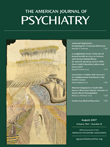This is a clear, useful, timely, and often gracefully written book that delivers what it promises. It defines complementary and alternative treatments, places them in a historical context, provides a critical review of up-to-date and evidenced-based data on specific treatments relevant to adult mental health, summarizes each treatment’s known risks and benefits, and includes easily accessible tables, appendices, and other references. Written by 25 practicing psychiatrists, psychologists, and other health care professionals, it is offered as “a bridge between the orthodox theories and practices of conventional biomedicine and the established theories and practices of the world’s major systems of medicine as they pertain to mental health care” (p. xx).
Part I, Background Issues, gives a nice overview of complementary and alternative treatments and has an especially useful chapter on legal, regulatory, and ethical issues surrounding its use. This chapter includes a model standard consent form grounded in good clinical sense and respect for patients, which is typical of the rest of the book. Another chapter refers to the definition of integrative approaches as those using “whole-person oriented healing and preventive methods” (p. 442). It distinguishes the goals of these approaches, achieving balance and enhanced self-awareness, from those of conventional medicine, which focuses on a return to good health.
Part II reviews 13 specific treatments grouped into three categories: nonconventional biological treatments; lifestyle and women’s issues; and spirituality, mindfulness, and mind-body practices. Each separate chapter, written by one or more authors, employs a consistent format, with clear definitions, review of the evidence, safety considerations, and specific guidelines or recommendations. The authors clarify that the book is not designed as a manual for any specific treatment. Tables are used intelligently and well. Data are presented in an impartial manner, without any assumption of bias toward the specific treatment discussed. I found all of the chapters useful, but a few stand out. The one on omega-3 essential fatty acids is particularly balanced in its assessment of the often confusing and multiple claims of benefits for this treatment. Another on integrative medicine treatments for depression in women contains a solid and succinct review of the risks of conventional treatments of depression during pregnancy, with very practical suggestions about approaches that integrate complementary and alternative treatments. The chapter on religious beliefs and spirituality in mental health treatment is one of the best brief reviews I have ever read on the subject. It is pithy, straightforward, nonreductionistic, and nonpolemic. All chapters are written with regard to adult patients. There are no specific chapters on either the child/adolescent or geriatric populations. This is one of the few drawbacks of the book.
The book closes with three helpful appendices: a table organized by major psychiatric disorder summarizing research findings of each complementary and alternative treatments approach described in the book, ranked according to levels of evidence supporting its use; a glossary of key complementary and alternative treatments terms; and a list of resources for complementary and alternative treatments.
This is a very good book. One has the sense that real doctors are thinking about real patients in everyday situations. It is readable, interesting, serves as a fine reference book, and is available in paperback at a relatively modest cost. I would recommend it for medical students, trainees, practicing psychiatrists, and for our patients. By focusing on the evidence basis of these treatments and acknowledging the limitations of what we know, it could enhance discussions with our patients about their care. It might also serve as a basis for the incorporation of some elements of complementary and alternative treatments into various APA Practice Guidelines.

